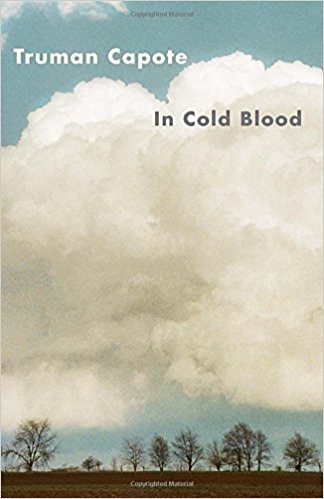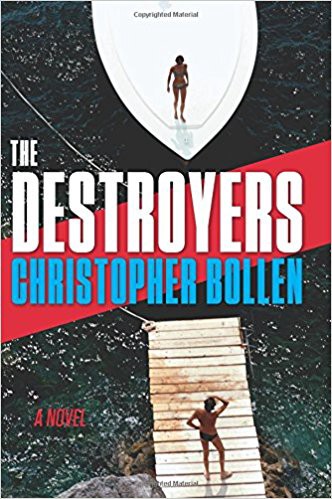Reading Lists
10 LGBTQ Crime Fiction Must-Reads
There are similarities between the arc of the crime narrative and the coming out narrative, says John Copenhaver, author of the new novel ‘Dodging and Burning’

The act of coming out is an unveiling. Since queer people live in a straight, cis-gendered dominant culture, we have the burden of proclaiming our sexual orientation or our gender identity. As a narrative, the coming-out story is one we’re familiar with, and one we’ve embraced. Crime stories have a similar structure, which perhaps is why they resonate with queer readers and writers: the tension of withheld secrets, the satisfying snap of the puzzle pieces fitting together, the wonder of the reveal. We’re drawn to a narrative where the unknown becomes known. Where motives are made clear. Where identity is made evident.
The best crime books are inquiries into character. While plot plays a vital role in the mechanics of storytelling, it’s the richness of character that makes a crime story memorable. We may read to know whodunit, but what lingers in our minds is what we’ve discovered about the characters and what those discoveries tell us about ourselves. When writing my novel, Dodging and Burning, I designed the plot to unfold around a crime scene photo, but the mystery I wanted to solve was essentially psychological: Why would WWII photographer Jay Greenwood show this photo to the debutant with a crush on him and the kid sister of his dead lover? It’s a question about motivation, which of course, is a question about character.
The list of books and authors below is a selection of my favorite crime stories. Some of these writers are dead, some are living, some are well known, others should be well known, all of them are queer authors, and all emphasize character in their work. I’ve also included several true crime books because they, like their fictional counterparts, explore motivation and human psychology.
The Paying Guests by Sarah Waters
In the struggling post-WWI British economy, to make ends meet Frances Wray and her mother are forced to rent rooms to a married couple, Lillian and Leonard Barber. Frances and Lillian fall in love, and when Leonard finds out, the covert love affair turns ugly — and bloody. Waters’s ear for period dialog and attention to detail evoke 1922 London beautifully, making us feel how confining it was to be a woman and a lesbian during this era. The novel takes a violent turn when the oppressive British legal system threatens not only to separate Frances and Lillian, but also to destroy their love. For these women, the injustice is that criminal behavior is determined by conservative social norms, not a sign of inherent moral corruption.
A Kind of Justice by Renee James
Renee James’s Bobbi Logan is a 43-year-old transgender woman, who juggles the responsibility of being a small business owner, a friend to a distressed ex-wife, and the primary suspect in a renewed investigation into a cold case murder. Although not a flawless novel — the plot has a few rough edges — James’ triumph here, and it’s an important one, is writing a detailed, positive, and mature transgender character into the pages of a crime novel. James not only gives Bobbi many layers, but also, in a gesture of empathy, she provides the transphobic counterpoint to Bobbi, Detective Allan Wilkins, with a textured and multifaceted existence, making the conclusion of the novel human and poignant.
Fadeout by Joseph Hanson
Insurance investigator Dave Brandstretter is unapologetically gay, tough, and masculine, but also tender. In this first installment of the series, he investigates a death claim on a local radio personality’s car accident. There’s no body, so he’s suspicious the accident was faked. Hanson’s lean prose drives the story forward with great energy, and although Brandstretter gains greater emotional texture through the twelve subsequent mysteries, he emerges as nuanced and complex early on. While mourning his dead lover Rod, he quotes Ginsberg’s “Song”: “The weight of the world is love. Under the burden of solitude, under the burden of dissatisfaction, the weight, the weight we carry is love.” Published in 1970, the book launched a groundbreaking series, the gold standard for serious gay crime fiction.
The Death of Friends by Michael Nava
Gay and Latino, Nava’s defense attorney Henry Rios echoes Brandstretter’s mixture of vulnerability and hardboiled edginess. Although The Death of Friends is the fourth in the original six book Rios series, it — as well as the books that precede and follow it, The Hidden Law and The Burning Plain respectively — are my favorites, because they explore the various facets of Rios’s relationship with Josh Mandel, who is dying of AIDS. Friends, in particular, follows Rios as he cares for his friend and ex-lover, and solves the murder of another old friend, who after many years and many lies has recently emerged from the closet. The specter of the AIDS epidemic hovers over Rios’s personal and professional life, and Friends brings them together in an unsettling conclusion, the aftermath of which permeates The Burning Plain.
In Cold Blood by Truman Capote
Often heralded as the first non-fiction novel, In Cold Blood began as an article for The New Yorker about the 1959 murders of four members of the Herbert Clutter family in Holcomb, Kansas. It quickly evolved into a book-length exposé about the perpetrators Dick Hickock and Perry Smith. Its brilliance lies in the marriage of Capote’s refined instincts as novelist and the compassion he develops for the victims and the murderers. As he was writing it, he developed a close emotional bond with Perry Smith in whom he saw a fellow outsider, a dark reflection of himself. When Perry was executed, something broke in him, and he never completed another book. The personalities he investigates fascinate, but it’s the complex emotional subtext that continues to resonate.
Place of Execution by Val McDermid
Scottish crime writer Val McDermid’s Place of Execution is a master class in structure and pacing. In 1963, a girl goes missing on a cold December night in Derbyshire and newly promoted Detective Inspector George Bennett becomes obsessed with solving her disappearance and possible murder; the case defines his career. In the late 90s, journalist Catherine Heathcote sets out to write a book about it. When the truth finally emerges, the twist doesn’t disappoint and yet it feels wholly plausible; for both these reasons, George forbids her from publishing it. The characters (and the readers) are thrown into a moral quandary: Is publishing the truth, no matter how compelling, always the right thing to do? That question lingers long after its final pages.
Apparition Alley by Katherine V. Forrest
Forrest’s detective Kate Delafield has a complex relationship with the closet. She’s a dedicated, sensitive, and skilled detective, but she remains closeted in order to navigate the homophobic LAPD. Through Forrest’s sharply written nine-book series, the first to feature a lesbian police detective, Delafield struggles with the isolation of the closet and its effects on her personal and professional life. Although it’s difficult to choose a favorite of Forrest’s novels, Apparition Alley, which centers on an internal affairs investigation of Delafield’s conduct during a deadly arrest, is particularly compelling. In Alley, the door to her closet is knocked open, causing her to question the faith she’s placed in her police department.
Party Monster: A Fabulous But True Tale of Murder in Clubland (aka Disco Bloodbath) by James St. James
In a drug-addled mania, King of the hedonistic 90s NYC club-kid scene, Michael Alig and his friend Freeze bludgeoned, injected with Drano, and smothered fellow club-kid and drug-dealer Angel Melendez. Later, they attempted a cover-up by dismembering the body and dumping it in the river. James St. James, a close confident of Alig’s, writes his account of the period leading up to the murder, a blend of affection for the freedom of the 90s party scene, and criticism of its debauched denizens, including himself. Between his wry and exuberant characterizations of the club kids, he cringes at his younger self, at times playfully, at times with a somber appraisal. The combination is charming, hilarious, and disturbing. By the end, you understand the allure of this manic and creative party scene — and why it had to end.
The Talented Mr. Ripley by Patricia Highsmith
Highsmith’s detached, keenly observant prose is the perfect vehicle to explore a complicated man like Tom Ripley. Ripley stands in the shadows just outside the sun-drenched world of Dickie Greenleaf, the son of a wealthy industrialist, and wants in. What begins as fascination with Dickie’s lavish and carefree lifestyle turns into murderous obsession. Through cracks in Highsmith’s beautifully controlled prose, Ripley implicates us. We are invited into his vulnerabilities, his anxiety about his social position and his desire to live well. We appreciate his artistic sensitivities, his cleverness. Soon this carefully constructed charisma falls away to reveal a cool, remorseless rage. But it’s too late, we’ve already been seduced.
The Destroyers by Christopher Bollen
In Bollen’s third novel, we luxuriate in the beauty of the Greek island of Patmos, its whitewashed mansions, its glassy water, its looming Monastery of Saint John. We peer voyeuristically over the shoulders of its inhabitants, both its native islanders and its wealthy vacationers. We enter a richly imagined world, a lush backdrop for a story about the collision of the colonizing American elite and the island’s indigenous community. Like Highsmith’s brilliant Talented Mr. Ripley, we delve deep in an exotic Mediterranean milieu and its moral murkiness. Bollen is a superb writer of scenes, a quality he shares with the great Highsmith. As characters dine, chit-chat, and drape themselves across the bows of yachts, the underlying tensions surface gradually, a slow boil, until they satisfyingly crescendo in violence.



















